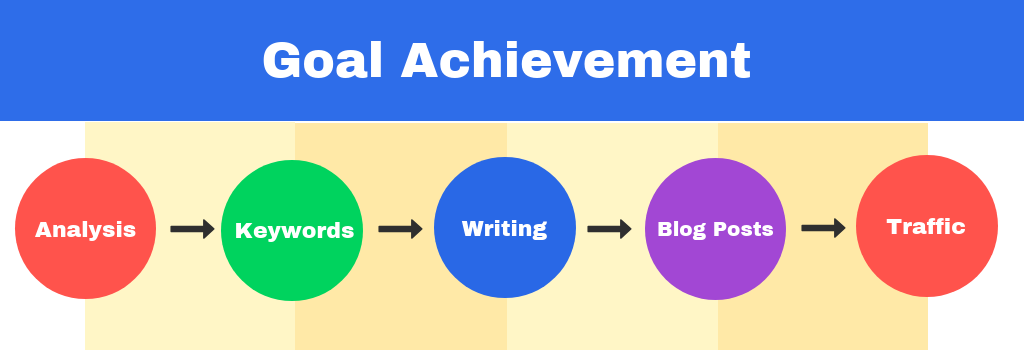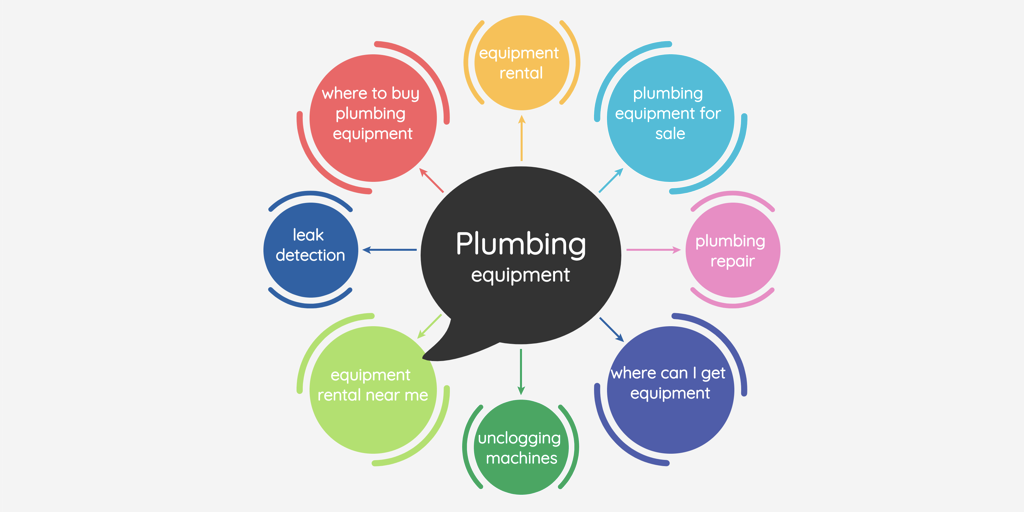
This is a guest post by Ronita Mohan. Ronita is a content marketer at Venngage, the online infographic and design platform. Ronita is interested in a variety of topics related to digital marketing, visual content, and online engagement, which she enjoys researching and writing about.
Content marketing has certainly become popular.
In fact, it’s become a lynchpin for marketing strategies.
Businesses of all sizes are employing content marketers left, right, and center to ensure that content is created and distributed on a regular schedule.
The purpose of content marketing may have started as a way for businesses to communicate with their audiences, but it has taken on another angle altogether. Content marketing is now seen as a primary driver of SEO and organic web traffic, and content needs to be tailored accordingly.
Unsurprisingly, content marketers are spending huge amounts of time developing blog post ideas that will gain them traction, incite visitors to their websites, and tempt users to use the businesses’ products or services. But without a solid content strategy, the content itself could be insubstantial and ineffective.
That’s why in this informative post I’ll be discussing content marketing in detail, and presenting you with an easy-to-understand, four-step content marketing framework you can follow straight away. Just read the following sections:
- How to improve your content plan
- Content framework step #1: Setting your content marketing goals
- Content framework step #2: Undergoing content research
- Content framework step #3: Establish your authority
- Content framework step #4: Cross-promotion
- Use Process Street to complement this content marketing framework!
Ready to dive in?
How to improve your content plan
Even with the best-written content, you may have seen that your articles aren’t gaining as much ground as it should. Your pieces aren’t ranking highly for the keywords you’re aiming for, and your website isn’t getting that highly-coveted position on Google’s front page.
So what’s going wrong?
Your first thought may be to create more content.
But more content does not equal content engagement on social media or Google.
Aggressive promotions aren’t the answer, either. You are essentially sinking in large amounts of money for views, not conversions. Social media promotion on your blog posts might gain you more engagement on social platforms (and more followers), but that’s unlikely to translate into web traffic.
With all this in mind, how do you use content marketing to boost your SEO and web traffic, all without having to sink in a ton of money, or by creating an endless stream of content?
The answer’s simple: A four-step content marketing framework that will help you increase organic traffic to your website.
Specifically, the four steps are:
- Setting your content marketing goals
- Undergoing content research
- Establishing your authority
- Cross-promoting your content
Now, it’s time to discover this helpful, four-step framework yourself. Read on!
Content framework step #1: Setting your content marketing goals

Creating a content strategy that leads to measurable and scalable growth should be the priority for any content marketer worth their salt. And the first step in creating a strong strategy is outlining content goals.
Like setting business goals and overall marketing goals, defining goals for your content will help you commit to your strategy, stay on track, and gain consistent growth.
Below are the top content marketing goals that businesses focus on:
- Higher conversions
- Boosting traffic
- Increasing domain authority
You might be creating content in an attempt to achieve these goals, but what are the steps you are taking in the process? Are you creating the same kind of content for all the goals? If so, your goals are different; therefore different types of content are required.
Look at it this way.
If you are creating content that is optimized for your linkbuilding strategy, you will be working towards boosting your domain authority.
However, the same content won’t be able to increase your conversions, because the keywords you are using for linkbuilding content will differ significantly from the keywords you choose for conversions.
Similarly, when your content is geared solely towards conversions – by ranking on niche keywords – you are likely to miss out on opportunities for ranking on your top keywords, that are more competitive but will gain you more traffic. If only Google that sees your content, are you really doing a good job?
We will talk about keywords in more detail later, but for now, what you need to know is that one type of content cannot achieve all your goals.
Goal achievement methods
What can you do to reach these various goals, then?
Begin by diversifying the content you’re creating.
Your brand may have focused on one type of topic for a long time, creating large amounts of well-written content that led back to your website. But this ploy is no longer good enough.
There is far too much content already available on the internet. If you want to utilize blog post traffic to help you reach your growth goals, you need to make changes to your content marketing strategy.
With your overall goals in mind, you need to create smaller goals to reach them, and even smaller goals to reach those—think of it as goal-ception!
For example, if you’re aiming for more web traffic, think about creating smaller goals, such as:
- Primary goal: Boost web traffic by 50%
- Secondary goal: Increase blog visits by 20% per month
- Tertiary goal: Write blogs to increase visits
- Check Google analytics
- Find the best performing pieces
- Analyze keywords
- Optimize content with keywords
- Promote content on social media
Here’s the achievement flow in a simple graphic form:

By breaking your marketing goals down into smaller, actionable goals and mapping them out via chart templates, it will be far easier to achieve those primary targets you set out to reach.
Once you’ve established goals properly, it’s time to move onto the second step of this content marketing framework: The content research phase.
Content framework step #2: Undergoing content research
There are two key types of research you need to do before creating your content: Audience research and keyword research.
Let’s dig into those a little deeper.
Audience research
Anyone who uses the digital sphere for marketing knows that audience drives both your content and content strategy.
With this in mind, you need to know who’s reading content online, what kind of content they’re interested in, and why they’re interested in it, so you can decide how to best reach them.
Social media and Google Analytics can give you a great deal of information about online users; those who have engaged with your content, and those who may do so in the future.
But you need to look deeper than simple demographics and interests.
For instance, your target audience may be between 23 and 45 years old, but that’s a rather vast age range. The content you create for a 23-year-old may not appeal to a 43-year-old. There’s a segmentation right there that you need to tailor your content to.
Additionally, finding out your target audience’s interests may or may not be beneficial. Knowing that the audience is interested in the Marvel movies isn’t going to help you if the product you’re selling is plumbing equipment.
Even if you write about Marvel, the chances of that section of the audience reading your content are minimal. And worse, they are likely to wonder why a plumbing company is writing about movies, and blacklist you instead.
You don’t want that.
On the other hand, if you are a plumbing company writing content about how to fix common plumbing issues, you significantly increase your chances of reaching your intended audience. That is how you decide what kind of content you need to create.
What problems do they need fixing? How much do they know, or want to know, about your product? Target those readers for your content because they are already looking for you; they just don’t know how to find you.
This graphic below shows how you can define your audience more precisely with personas.

You can have your overall audience demographics at hand, but within that group, find the people who will engage with what you create. Which brings me to the next part of the research phase: Keyword research.
Keyword research
Finding appropriate keywords is an incredibly important part of the process of writing content – in fact, content marketing is somewhat bound by keywords.
Keywords are what help people find your content, so if you aren’t researching how to use them, your content is essentially getting lost in the vast sea of online content, without anybody clicking on, looking at, or reading your well-written work.
Suffice to say, it’s incredibly important to find and use appropriate keywords.
There are two kinds of essential keywords for a brand – high-intent keywords and informational keywords.
High-intent keywords are keywords that you use to drive traffic to webpages and are focused on conversion. Typically, the webpages high-intent keywords are used on are pages such as product and landing pages. The keywords you use for these pages are generally based on the product or service you’re selling, such as ‘plumbing equipment’.
High-intent keywords are extremely competitive. Everyone who is selling a similar product is aiming for particular keywords, which makes it harder for your business to rank for it. Depending on the product, it can also be difficult to include those keywords naturally in content without sounding overly sales-focused.
Pages that are informative and not focused on selling, meanwhile, tend to use informational keywords. So, instead of ‘plumbing equipment’, these pages will use a keyword such as ‘how to unclog a drain’.
These are the pages where people go when they want to learn something, not buy something. Which is why the keywords you use here are unlikely to be as competitive as your high-intent keywords.
Organizing your keywords
I recommend using Jumpfactor’s keyword research guide to understand how to find keywords properly. But, generally, you will want to start by using Google Search Console to determine which keywords people are searching for online to find the content you need to tackle.
You can also use Google Keyword Planner or the Moz Keyword Explorer to find out the search volumes for the keywords you are targeting, and what related keywords you could tap instead.
Once you have an idea of your keywords, list the broad keyword categories, then list out associated keywords into subcategories, and break that down one further level.
From there, you’ll be able to determine your longtail keywords.
The mindmap below is an example of how keywords relate to each other.

With your keywords organized, you will be able to create content that targets the relevant keywords people will actually be looking for.
Keyword research may take some time, but it saves you from having to create endless content which you shoot into the dark. The right keywords can boost your traffic significantly, which makes it an endeavor well worth your time.
Content framework step #3: Establish your authority
Adopting small business marketing practices is the first step to gaining an audience, but with so many large companies hogging online traffic, you need to do something different to get noticed.
With your audience determined and your keywords in place, you’re now well-positioned to prove to Google that you’re an authority figure in your respective field.
But how can you establish yourself as an authority figure and prove to Google that you deserve to be ranked highly?
One of the primary ways to establish authority is by optimizing the use of keywords. If you’ve followed this framework, you will have already broken down your keywords into several smaller topics – go ahead and use a variety of these keywords in your articles.
As they are all related, internet users will eventually be prompted towards your lead keyword – your high-intent, sales-focused keyword.
Another way to establish authority is by building links to your content.
To do this, you’ll have to find like-minded websites who will place links to your site in their own content. The more of these links – known as backlinks – you gain, the more Google will be assured that you’re a trustworthy resource.
Your content marketing strategy should help and enable you to become an authority figure in your field. But it all comes down to keywords – with the right keywords, you can get on Google’s front page so you can reach your target audience far more easily.
Content framework step #4: Cross-promotion
In the previous three steps of the framework, we’ve discussed ways of optimizing your content for Google and your audience.
In the fourth and final part of this content marketing framework’s todo list, you need to find ways to reach your audience, as simply creating content and uploading it to your website isn’t enough.
You need to start promoting.
You can promote your content on social media, via posts or sponsored posts, as well as Google Ads. But there are other ways to maximize your sales funnel.
We have mentioned backlinks before as a way to gain authority on Google. But backlinks are also excellent for promoting your content, too.
You can use a tool like Ahrefs to find content that could link to you. Work on getting 100-150 relevant links, as you are unlikely to get replies from all those you reach out to (you’ll probably get a maximum of 2 or 3 from one outreach session). You can also use Process Street’s email marketing templates to contact the people on your list.
A few tips to remember when cross-promoting through outreach:
- Keep your outreach personal, so it doesn’t look like a robot sent an email.
- Don’t be afraid to experiment! One kind of mail may work with a certain person, and not another, so try different combinations. ✉️
- Always follow-up, but don’t be aggressive about it. You want to create a partnership so you can cross-promote regularly.
- If the follow-ups don’t work, move on. If they’ve ignored your mail three or four times, they really aren’t interested. ➡️
Linkbuilding is, overall, a great addition to your content marketing strategy, even it can take time to execute. But don’t let this put you off. Along with your organic promotion efforts, linkbuilding will help to significantly improve your web traffic over time, so it’s definitely worth the time and effort!
There you have it – a four-step content marketing framework, broken down into action points, that will enable you to target your business’ content perfectly to your audience.
To help create the best content possible, use state-of-the-art BPM software Process Street to complement and streamline this content marketing framework.
Use Process Street to complement this content marketing framework!
If you haven’t used Process Street before, it can be defined, in a nutshell, as superpowered checklists.
By using checklists, you can ensure you and your team are following processes to the T. From a marketing-perspective, this means whenever you’re creating a new blog post, podcast, or another piece of marketing material, the content will be produced to your business’ own standards.
To launch checklists, all you have to do is document the business processes, procedures, or workflows via templates, and then you’re good to go!
It’s that simple. And Process Street is free to use, too.
But what makes Process Street’s checklist superpowered, exactly?
With workflow features like stop tasks, dynamic due dates, task permissions, and conditional logic, you can tailor your checklists to your exact needs! This helps you turn regular checklists into ones that are out-of-this-world.
To learn more, check out this webinar hosted by our very own Blake Bailey.
Although you can sign up, jump in, and start making your own processes to complement this four-step framework right away, there are a plethora of free-to-use templates made by the team at Process Street.
Find the blog pre-publish checklist, SEO checklist: The keyword research process, and advanced content promotion checklist templates embedded below.
Blog pre-publish checklist
SEO checklist: The keyword research process
Advanced content promotion checklist
With these above templates – or your own made from scratch – and this four-step framework, you’re ready to take the web by storm.
Do you work in content marketing and content creation? Are there any tips and tricks for creating, measuring, or promoting content that you’d like to share? If so, write them in the comment section below!







 Workflows
Workflows Projects
Projects Data Sets
Data Sets Forms
Forms Pages
Pages Automations
Automations Analytics
Analytics Apps
Apps Integrations
Integrations
 Property management
Property management
 Human resources
Human resources
 Customer management
Customer management
 Information technology
Information technology



Thom James Carter
Thom is one of Process Street’s content writers. He’s also contributed tech-related writing to The New Statesman, Insider, Atlassian, G2, The Content Marketing Institute, and more. Follow him on Twitter @thomjamescarter.